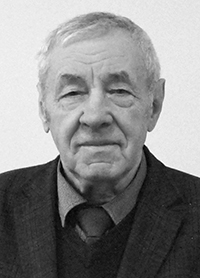PHYSICAL OVERSTRAIN IN SPORTS: MODERN PREVENTION AND REHABILITATION PROCEDURE
Keywords:
chronic overstrain, risk factors, antihomotoxic medications, prevention, microcirculation.Abstract
Objective of the study was to analyze exposures to the microtraumatic disease risks and benefits of Traumel-C for treatment of the microtraumatic-disease-associated impaired local circulation in gorodki players, to facilitate trainings and special fitness improvement efforts.
Methods and structure of the study. We sampled for the study Masters of Sport in gorodki (n=12) [national game similar to skittles, with pins knocked out by throwing a bat]. The sample was tested for microcirculation disorders in the upper limbs by an infrared thermometric DT-639 system, with the pain syndrome self-rated on a visual-analog scale. The detected microcirculation disorders were treated by Traumel-C antihomotoxic medication (made by Heel Co.) with taping.
Results and conclusion. To identify the injury risk factors for gorodki players, we first surveyed their coaches (n= 24). They reported the following common risk factors: idle periods in trainings followed by excessive physical workouts (21%) and mismanagements in combining the training elements (11%); and the following sport-specific risk factors: elbow joint overextensions (32%), and too heavy bats favored by the sport elite (29%).
The surveys identified the core musculoskeletal system chronic overstrain risk factors for the gorodki sport sample and showed benefits of the biological regulation service using te hTraumel-C antihomotoxic medication for the upper-limb microcirculation protection, improvement and post-training rehabilitation purposes. We recommend Traumel-C with taping for application in the gorodki training systems for the upper-limb musculoskeletal system overstrain prevention and sport-specific fitness improvement purposes.
References
Alekseev A.A., Titov O.V. Connective tissue biology and medicine of the XXI century based on universal law of trinity. Moscow, 1997. 129 p.
Zhitnitskiy R.E., Gubin G.I., Brysova M.B. Microtraumatic disease. Medicine in elite sports: state and prospects for development. SportMed2007. Proc. international scientific conf.. Moscow, November 24-25 2007). Moscow: Fizicheskaya kultura publ., 2007. pp. 99-100.
Lubyako A.A. Cell, tissue and organ recovery therapy in rehabilitation treatment. Extreme Medicine and Biology. Investment projects in Russia. Proc. I forum (September 10-12 2012). St. Petersburg, 2013. pp. 37-43.
Makarova G.A. Sports medicine. Textbook. Moscow: Sovetskiy sport publ., 2003. 480 p.
Opinion of Russian doctors about Traumeel C and NSAIDs: results of doctors’ survey. Biologicheskaya meditsina. 2013. V. 9. No. 2. pp. 4-5.
Partsernyak S.A.; Shabrov A.V. [ed.] Integrative medicine: from ideology to health methodology. St. Petersburg: Nordmedizdat publ., 2007. 424 p.
Renstrom P.A.F.H. Sports injury. Kiev: Olimpiyskaya literature publ., 2003. 471 p.
Reckeweg G.G. Foundations of homotoxicosis doctrine. Biologicheskaya meditsina. 2010. No.1. pp. 5-7.
Reckeweg G.G. What is biological medicine?. Biologicheskaya meditsina. 2011. No. 2. pp.4-12.
Rikken K.H. Therapy with Heel biological antihomotoxic drugs - introduction to homotoxicology and antihomotoxic therapy. Biologicheskaya meditsina. 1995. No. 1. pp. 2-12.
Chashchin M.V., Konstantinov R.V. Occupational diseases in sports. Moscow: Sovetskiy sport, 2010. 176 p.
Heine H., Schmolz M. Immunological auxiliary reaction caused by plant extracts contained in antihomotoxic drugs. Biologicheskaya meditsina. 1999. No. 1. pp. 5-8.

Additional Files
Published
Versions
- 17-01-2022 (2)
- 01-12-2021 (1)

